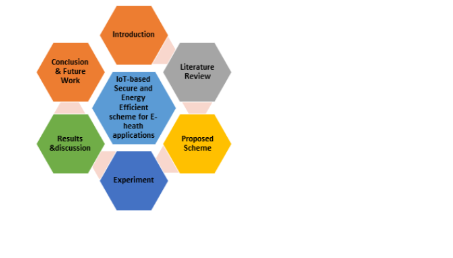


Indian Journal of Science and Technology
Year: 2020, Volume: 13, Issue: 28, Pages: 2833-2848
Original Article
Mamoona Humayun1*, NZ Jhanjhi2, Malak Z Alamri1
1Department of Information systems, College of Computer and Information Sciences Jouf University, KSA
2School of Computer Science and Engineering (SCE),, Taylor’s University, Malaysia
*Corresponding Author
Email:[email protected]
Received Date:08 June 2020, Accepted Date:19 July 2020, Published Date:07 August 2020
Background/objectives: This study presents a secure and energy-efficient scheme of patient’s data transmission from wearable IoT sensors (WIS) to base station (BS). IoT sensors are widely used in the healthcare domain for realtime data collection and transmission. However, these sensors are resourceconstrained in terms of computational power and storage due to which chances of security breaches and threats increase. Moreover, with time the energy level of IoT sensors also degrade that sometimes leads towards loss of sensitive patient data. Purpose: The purpose of this study is to provide secure data transmission between wearable sensors and base stations and increasing energy efficiency of resource-constrained wearable IoT sensors. Method: The proposed scheme was tested by creating a mathematical model and then creating a simulation setup using the Cooja Contiki simulator. Findings: The results show that the proposed scheme provides secure and energy-efficient data transmission from WISs to BS as compared to the existing approaches. Further, the proposed scheme addresses some key issues including availability, reliability, scalability, and limited patient mobility. Novelty: Our research presented a unique approach for e-health applications using the IoT, where we considered the lightweight and secure scheme providing multiple group node concept.
Keywords: Internet of Things (IoT); wearable IoT sensors (WIS); healthcare; Group node (GN); base station (BS); simulation
© 2020 Humayun et al..This is an open-access article distributed under the terms of the Creative Commons Attribution License, which permits unrestricted use, distribution, and reproduction in any medium, provided the original author and source are credited. Published By Indian Society for Education and Environment (iSee).
Subscribe now for latest articles and news.